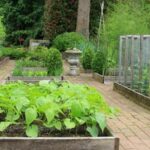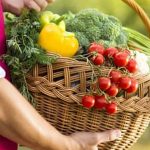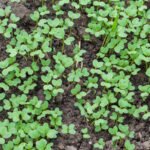Are you interested in starting an indoor vegetable garden? Whether you have limited outdoor space or simply want to enjoy fresh produce year-round, indoor vegetable gardening can be a rewarding and practical hobby.
In this article, we will explore the benefits of growing your own vegetables indoors and provide valuable tips for a successful indoor garden. From choosing the right vegetables to understanding the importance of soil, light, and maintenance, we’ve got you covered with all the information you need to get started.
Indoor vegetable gardening allows you to have control over the growing environment, making it possible to grow organic produce without worrying about weather conditions or pests. With the right knowledge and tools, you can create a thriving indoor garden that provides a sustainable source of fresh vegetables for your family.
In the following sections, we will discuss how to choose the best vegetables for indoor gardening, select the perfect containers, create an ideal soil and fertilizer mix, maximize natural light and maintain consistent temperature for healthy plants, properly water and maintain your indoor garden, deal with pests and diseases, as well as harvest and enjoy your homegrown bounty.
So let’s dive into the wonderful world of indoor vegetable gardening and start reaping the benefits of growing your own delicious produce right in your own home.
Choosing the Right Vegetables for Indoor Gardening
When it comes to indoor vegetable gardening, choosing the right vegetables is crucial for success. Not all vegetables thrive in an indoor environment, so it’s important to select varieties that are well-suited for growing inside. Here are some tips for selecting the perfect vegetables for your indoor garden:
- Leafy Greens: Leafy greens such as lettuce, spinach, and kale are excellent choices for indoor gardening. They don’t require a lot of space and can be grown in shallow containers.
- Herbs: Herbs like basil, parsley, and cilantro are ideal for indoor gardens. They do well in small pots on windowsills or in hanging planters.
- Root Vegetables: While not all root vegetables are suitable for indoor gardening, some varieties like radishes, carrots, and beets can thrive in containers with proper depth and good drainage.
It’s important to consider the space you have available and the amount of natural light your indoor garden receives when choosing which vegetables to grow. Additionally, consider your own preferences and cooking habits when deciding which vegetables to cultivate indoors.
Keep in mind that some larger vegetables or those that require lots of space to spread out may not be suitable for indoor gardening. By choosing the right vegetables for your indoor garden, you can set yourself up for a successful and bountiful harvest.
Planting a variety of different vegetables can also add visual interest to your indoor garden while providing a diverse selection of fresh produce for you to enjoy. With the right selection of vegetables, you can create a thriving indoor garden that adds beauty and delicious flavors to your home.
Selecting the Perfect Containers
When it comes to indoor vegetable gardening, selecting the right containers is crucial for the success of your plants. The containers you choose will directly impact the health and growth of your vegetables, so it’s important to understand the importance of drainage, size, and materials.
Drainage
Proper drainage is essential for preventing waterlogged soil and root rot in your plants. When selecting containers for indoor vegetable gardening, make sure they have drainage holes at the bottom to allow excess water to escape. If you’re using decorative pots without drainage holes, consider placing a layer of gravel or small rocks at the bottom to improve drainage.
Size
The size of your containers will depend on the type of vegetables you plan to grow. Larger vegetables such as tomatoes and peppers will need more space for their roots to spread out, so opt for deeper and wider containers. For smaller root vegetables like carrots and radishes, shallower but wider containers may be sufficient. Consider the mature size of your plants when choosing container sizes to ensure they have enough room to thrive.
Materials
There are various materials available for indoor garden containers, including plastic, ceramic, metal, and terracotta. Each material has its pros and cons, so consider factors such as weight, durability, and moisture retention when making your decision. Plastic containers are lightweight and retain moisture well, while ceramic and terracotta provide better insulation but are heavier. Choose materials that suit your specific needs and preferences for indoor vegetable gardening success.
By understanding the importance of drainage, size, and materials when selecting containers for indoor vegetable gardening, you can create an ideal growing environment for your plants. Whether you’re growing leafy greens or herbs indoors, choosing the right containers is a critical step in ensuring a thriving indoor garden.
Soil and Fertilizer
When it comes to indoor vegetable gardening, creating the ideal soil and fertilizer environment is crucial for the success of your plants. Here are some tips for ensuring that your indoor garden thrives:
- Choose a high-quality potting mix: Look for a potting mix specifically designed for indoor container gardening. These mixes are typically lighter in weight and provide excellent drainage, which is essential for preventing waterlogged roots.
- Add organic matter: Incorporating organic matter, such as compost or well-rotted manure, into your potting mix can help improve soil structure and fertility. It also provides essential nutrients for your growing vegetables.
- Consider adding perlite or vermiculite: These materials help to improve aeration and water retention in the soil, which is especially important in containers where soil can dry out quickly.
In addition to using the right soil mix, providing proper fertilization is key to supporting healthy plant growth. Here are some tips for fertilizing your indoor vegetable garden:
- Use a balanced fertilizer: Look for a complete, balanced fertilizer designed for vegetables. This will ensure that your plants receive all the essential nutrients they need for healthy growth.
- Follow the instructions: Be sure to follow the application instructions on the fertilizer packaging. Over-fertilizing can be just as harmful as under-fertilizing, so it’s important to use the correct amount.
- Consider organic options: If you prefer to use organic fertilizers, there are many options available that can provide nutrients to your plants without synthetic chemicals.
By providing the right soil and fertilization for your indoor vegetable garden, you’ll be setting up your plants for success and ensuring a bountiful harvest of fresh, homegrown produce.
Light and Temperature
When it comes to indoor vegetable gardening, providing the right amount of light and maintaining consistent temperature are crucial for the success of your plants. Most vegetables require a minimum of 6 hours of sunlight per day, so it’s essential to place your indoor garden in a location that receives adequate natural light.
South-facing windows typically provide the best light exposure, but if this is not available, supplemental grow lights can be used to ensure that your plants get the amount of light they need to thrive.
In addition to maximizing natural light, it’s important to maintain a consistent temperature for your indoor vegetable garden. Most vegetables prefer temperatures ranging from 65°F to 75°F during the day and slightly cooler at night.
Fluctuations in temperature can stress plants and affect their growth, so be mindful of any drafts or heating/cooling vents near your indoor garden. Using a thermometer can help you monitor the temperature and make adjustments as needed to create an optimal growing environment for your vegetables.
Another consideration when it comes to light and temperature is seasonal changes. As the amount of natural light varies throughout the year, you may need to adjust the placement of your indoor garden or use supplemental lighting during the winter months. Similarly, fluctuations in temperature during different seasons may also require you to make adjustments to maintain an ideal growing environment for your vegetables.
| Vegetable | Preferred Light Exposure |
|---|---|
| Lettuce | 6-8 hours of sunlight per day |
| Tomatoes | Full sun (at least 8 hours per day) |
| Bell Peppers | Minimum of 6 hours of sunlight per day |
Watering and Maintenance
Understanding the Watering Needs of Indoor Vegetables
When it comes to indoor vegetable gardening, one of the most critical factors for success is proper watering. Different vegetables have varying water needs, so it’s essential to understand the specific requirements of the plants you are growing. Leafy greens, for example, require more frequent watering compared to root vegetables. It’s important to check the soil moisture regularly and adjust your watering schedule accordingly.
Choosing the Right Watering Method
There are several methods for watering indoor vegetable plants, including using a watering can, spray bottle, or self-watering containers. Each method has its advantages and disadvantages, so it’s important to choose the right one for your specific plants and containers. For example, delicate seedlings may benefit from a gentle misting with a spray bottle, while mature plants may require a thorough soaking with a watering can.
Tips for Maintaining Your Indoor Garden
In addition to proper watering, there are other maintenance tasks that are essential for keeping your indoor vegetable garden thriving. Regularly inspect your plants for signs of pests or diseases and take prompt action if any issues arise. Keep an eye on the overall health and growth of your plants, and make adjustments as needed to ensure they continue to thrive in their indoor environment.
Overall, proper watering and maintenance are key components of successful indoor vegetable gardening. By understanding the watering needs of your plants, choosing the right watering method, and staying on top of maintenance tasks, you can create a healthy and productive indoor garden that provides you with fresh produce year-round.
Dealing With Pests and Diseases
When it comes to indoor vegetable gardening, dealing with pests and diseases is a common challenge that many gardeners face. However, there are several preventative measures and natural remedies that you can use to keep your indoor garden healthy and thriving.
One of the best ways to prevent pests and diseases in your indoor vegetable garden is to start with healthy plants. Before bringing any new plants into your home, be sure to inspect them carefully for any signs of pests or diseases. Additionally, be mindful of overwatering your plants, as this can create the damp conditions that many pests thrive in.
In addition to preventative measures, there are also several natural remedies that you can use to combat pests and diseases in your indoor vegetable garden. For example, neem oil is an organic insecticide that can be used to control common indoor garden pests such as aphids, spider mites, and whiteflies. Similarly, a mixture of water and mild liquid soap can help to control soft-bodied insects like mealybugs and scale insects.
| Preventative Measures | Natural Remedies |
|---|---|
| Start with healthy plants | Neem oil for controlling common indoor garden pests |
| Avoid overwatering | Mixture of water and mild liquid soap for soft-bodied insects |
Harvesting and Enjoying
In conclusion, indoor vegetable gardening can be a rewarding and enjoyable experience for anyone looking to grow their own fresh produce at home. By choosing the right vegetables, selecting suitable containers, preparing the right soil, and understanding the importance of light and temperature, you can create an ideal environment for your indoor garden to thrive.
Additionally, by following proper watering and maintenance techniques and being proactive in preventing pests and diseases, you can ensure that your plants remain healthy and productive.
As you begin to harvest your indoor vegetable garden’s bounty, it’s important to remember that the fruits of your labor can be used in a variety of delicious ways. From adding fresh herbs to your favorite recipes to enjoying crisp salads made from homegrown greens, there are countless ways to savor the flavors of your indoor garden.
Whether you’re a seasoned cook or just beginning to explore the world of gardening, incorporating homegrown vegetables into your meals is a gratifying way to connect with the natural cycle of growing and harvesting.
In essence, indoor vegetable gardening not only provides an opportunity to cultivate nutritious produce but also offers a sense of accomplishment and satisfaction. By following these tips for indoor vegetable gardening, you can embark on a journey of sustainable living while reaping the benefits of having fresh, flavorful ingredients at your fingertips. So roll up your sleeves, get your hands dirty, and start enjoying all that indoor vegetable gardening has to offer.
Frequently Asked Questions
How Do You Start an Indoor Vegetable Garden for Beginners?
Starting an indoor vegetable garden for beginners involves choosing the right location with adequate sunlight, selecting the appropriate containers and soil, and deciding which vegetables to grow. It’s important to research the specific needs of each vegetable and to start with easy-to-grow plants.
How Do You Take Care of Indoor Vegetable Plants?
Taking care of indoor vegetable plants requires regular watering, monitoring for pests and diseases, providing sufficient light, and ensuring proper air circulation. It’s important to follow a consistent watering schedule and fertilize as needed to promote healthy growth.
What Is the Best Soil for Growing Vegetables Indoors?
The best soil for growing vegetables indoors is a well-draining potting mix that is rich in organic matter. A mix specifically designed for vegetables is ideal, as it provides the necessary nutrients and promotes strong root development. It’s important to avoid using garden soil, as it can lead to drainage issues and may contain pests or disease pathogens.

If you’re looking to get into vegetable gardening, or are just looking for some tips on how to make your current garden better, then you’ve come to the right place! My name is Ethel and I have been gardening for years. In this blog, I’m going to share with you some of my best tips on how to create a successful vegetable garden.





